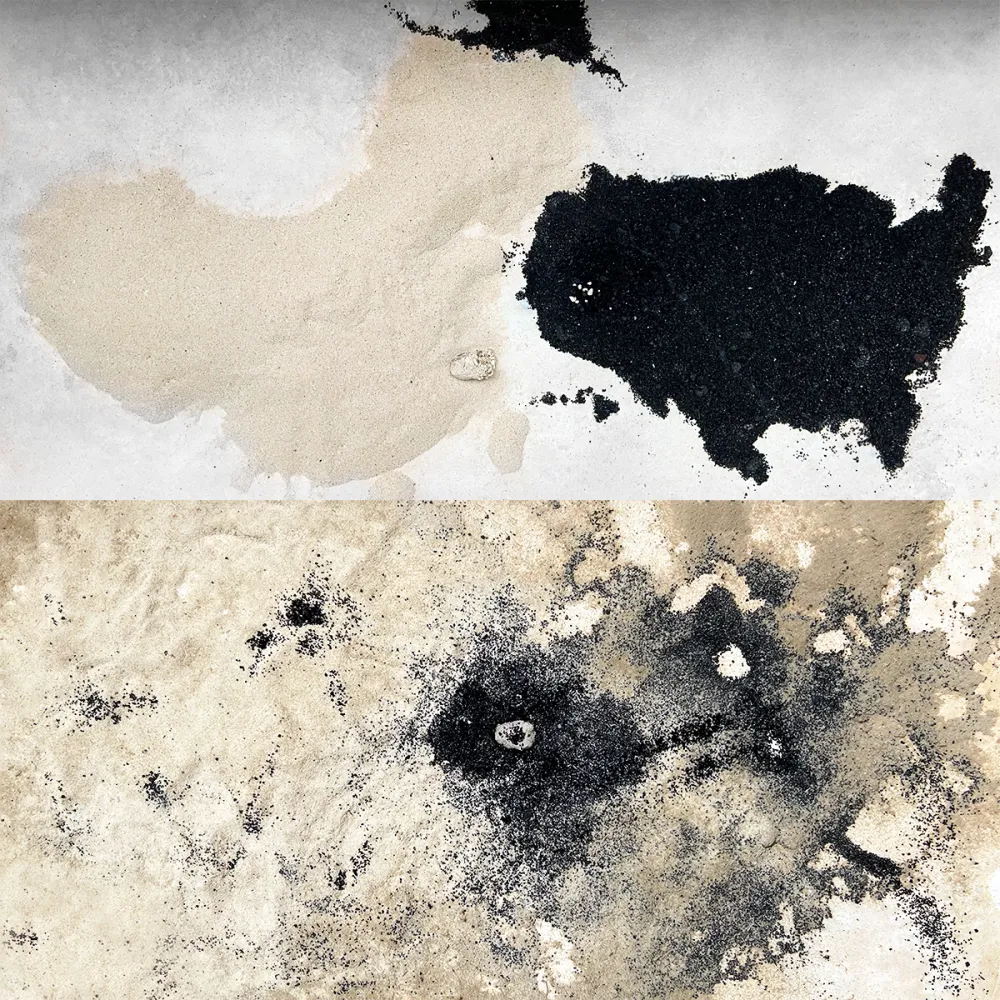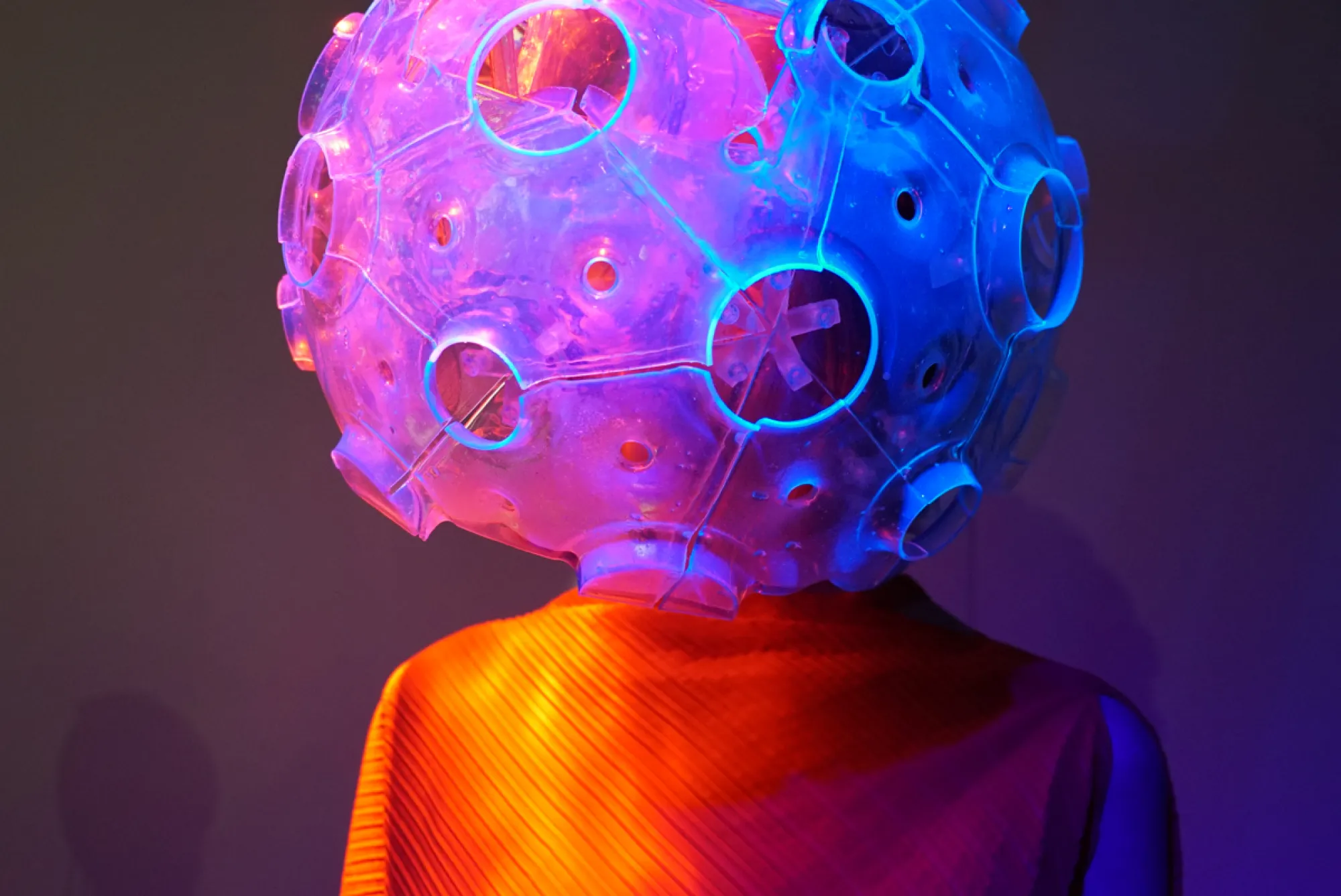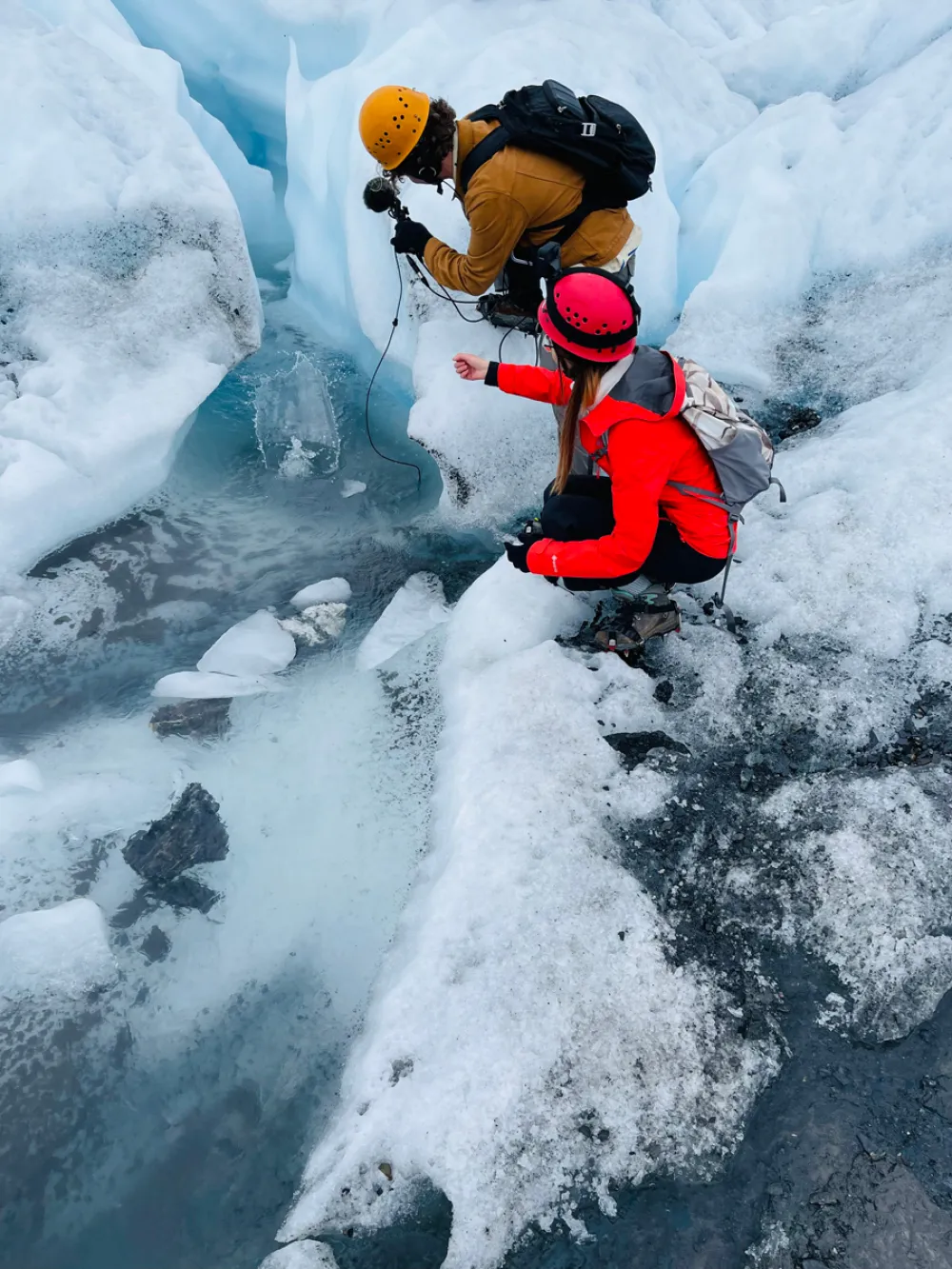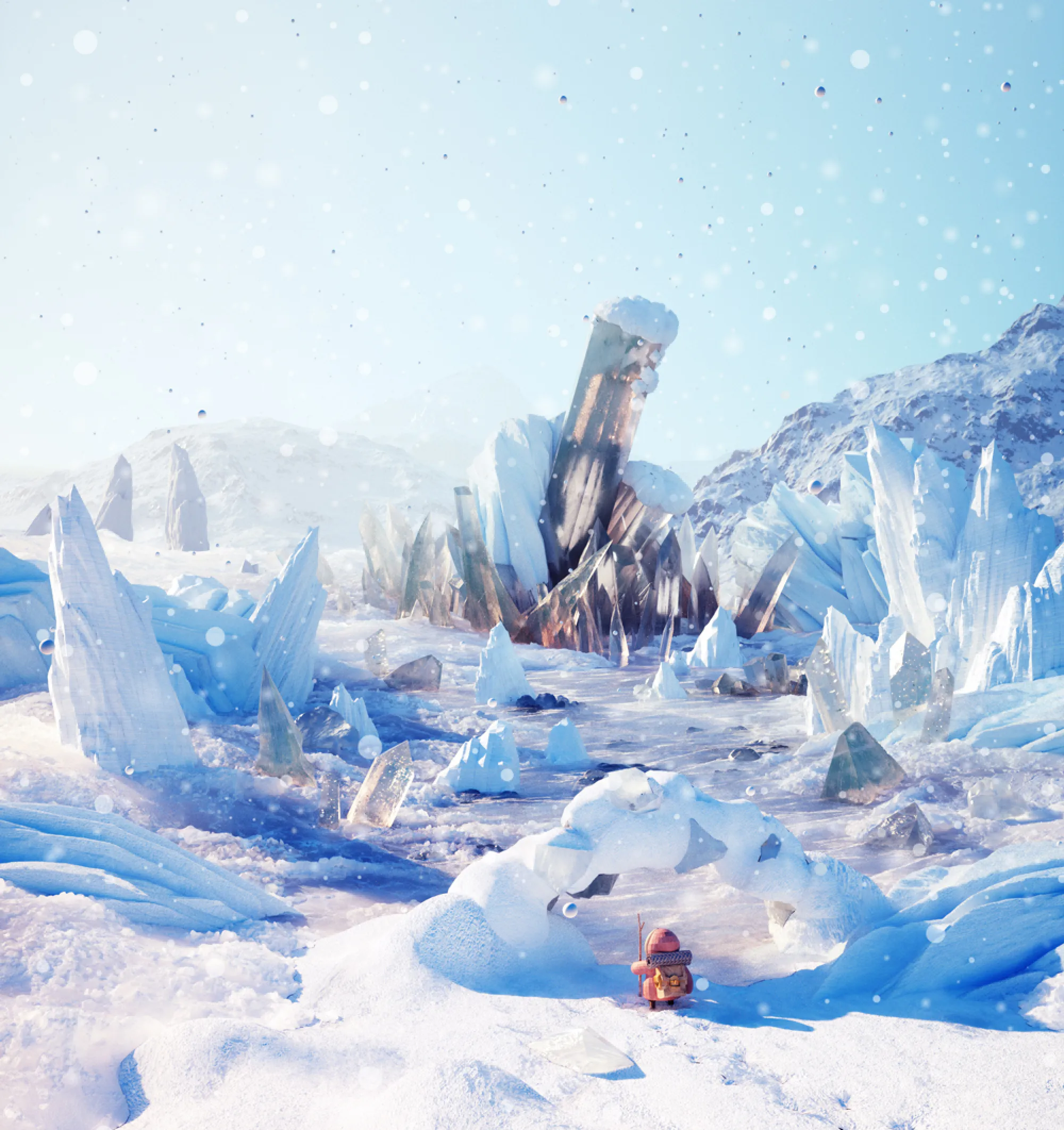Animal Agency in the Anthropocene
Assistant Professor Jiabao Li’s futurism is guided by the dignity of other beings
by Penny Snyder
The Hawaiian bobtail squid knows how to be invisible. About the size of a golf ball, the water dweller spends its days camouflaged in the sand off the coast of Hawaii. At night, it emerges from the seafloor alight, flickering with the stars and moon.
Assistant Professor in Design Jiabao Li first came across the bobtail squid when she was embedded in a research lab in Hawaii with UT postdoctoral researcher Cooper Galvin and Margaret McFall-Ngai of the University of Hawaii, the world’s preeminent researcher focused on the symbiotic relationship between the squid and its bioluminescent bacteria. Vibrio fischeri, the bacteria, dwell in the squid’s body cavity; they luminesce only when they sense light streaming through the ocean, allowing the squid to be camouflaged from prey and predators alike in the nighttime ocean.

In Hawaii as part of an artistic residency, Li noticed that the squids in the lab were swimming in barren white tanks, unlike the rich life of the seafloor that they typically inhabit. She collected white and black Hawaiian sand from the islands to introduce to the tank. Arranging the sand into the geographic borders of China and the United States—countries that Li has deep ties to—she also created a mise en scène for a squid to improvise in.
The squid got right down to business: surveying the landscape, propelling itself around the two global superpowers using two tentacles to sweep sand over its body, snuggling into the grit; shooting itself along laterally with sand on his back, stirring up the white and black granules into a froth. As the weeks wore on, the outlines of the countries became fuzzier and fuzzier.
Li called this work Squid Map. It includes photos of the tank landscape over time, a video timelapse complemented by a custom aquatic soundtrack, and an installation with a sand lagoon with a projection in the center. Li also created a gyotaku, a Japanese art form and method of using marine life as a printing plate. Li used a squid that died in a lab-handling accident and its last ink—reflecting on the treatment of animals in lab settings.
For Li, fauna is personal and political. The squid’s movements reminded her of her experiences “as an immigrant: moving between China and the U.S., carrying the baggage of two cultures, trying to assimilate and to blend in.” And in the confined landscape of a research tank, the squid’s flouting of geopolitical boundaries represents the ways that animals and ecosystems often get caught in the crosshairs of human decisions.
Squid Map is characteristic of Li’s ecocentric practice as an artist, designer and teacher. She often works directly with animals and credits them as collaborators, which unsettles our long-held norms that only humans have the agency to act on our surroundings, bending the natural world to our will.
In the Anthropocene era, humans are beginning to physically perceive the devastating effects of climate change. As a result, there is a growing interest in ways of understanding the world that treat humans and other living beings as equals. Li thinks that “by understanding the intelligence, movement and behavior of the nonhuman species, we can foster this great appreciation of their existence and question our own actions.”
Li didn’t always work with animals, but her earlier work in design and the arts also explored perception, agency and consciousness.
In her graduate work at Harvard University, Li’s design experiments focused on how the deluge of contemporary technology was shaping human consciousness. After studying engineering in her undergraduate program in Singapore, Li brought her critiques of technology to tech-enabled media, including wearables, robots, augmented and virtual reality, projection, performance, software and installations.

For one work, TransVision, which began as her thesis project at Harvard, Li fabricated a bulbous helmet that simulates biased streams of information that internet consumers confront. With modular 3D-printed pieces, sensors in the spacesuit-esque hood register the color red as an allergy, distorting red objects within its frame of vision. Toggling off, the helmet can also minimize the impact of red when it’s placed in placebo mode.
In 2019, she was invited to give a TED Talk about TransVision and another project that filtered the internet browsing experience to minimize digital interference. Both projects attempt to bring attention to and ameliorate the parasitic effects of the attention economy, which relies on exploiting people’s focus and engagement.
At the same time, Li was living in the San Francisco Bay Area and working at Apple. As part of the human interface design prototyping team, she worked on long-range projects, including the recently announced Apple Vision Pro, the new VR headset from Apple. Li had been working on the project since its inception six years ago. Other projects that have come online that Li contributed to include the tools that enabled lidar scanning of real environments for AR experiences on iPhones and the ability for the Apple Watch to read and detect irregular heart rhythms.
In 2020, after the COVID-19 pandemic ushered in remote work, Li moved to Alaska, a turning point as she moved toward a more ecocentric practice. Surrounded by Alaska’s rugged natural setting, she reflected more on the beauty, fragility and vulnerability of nature.

Li’s recent virtual reality film Once a Glacier, which premiered at the South by Southwest Film Festival in March 2023, was inspired by her visits to the Matanuska Glacier, a 27-mile-long river of ice. Following a girl and her cherished glacier, viewers sit in a kayak, hear the cracking of the glacial ice melting, and smell ice moss — inhabiting the girl’s perspective as she attempts to save it.
Li landed at The University of Texas at Austin in the School of Design and Creative Technologies in 2021 and has been characteristically busy ever since. She teaches undergraduate and graduate Design courses and founded the Ecocentric Future Lab. An open lab of designers, artists, engineers and science researchers, the lab serves as a locus for ecocentric design, design for health and tech activism on campus.
During spring 2023, the lab debuted its first major project: an exhibition for Austin’s Fusebox Festival called Entangled Intelligences. With a menagerie of UT students and animals (including cats, lunar moths and spiders), the exhibition featured collaborations between artists and animals, inviting audiences to reflect on the emotional connections between humans and animals, as well as the multifaceted linkages even in our everyday ecosystems.
The bobtail squid evolved a light organ to make a permanent home in its body for Vibrio fischeri around 30 million years ago. The earliest evidence of human-created fire dates to about 800,000 years ago. Jiabao Li, in her unremitting curiosity and care, works in this chasm — between what we as humans know and what we don’t know — steered by eons of evolutionary knowledge and guided by the dignity of other beings.


